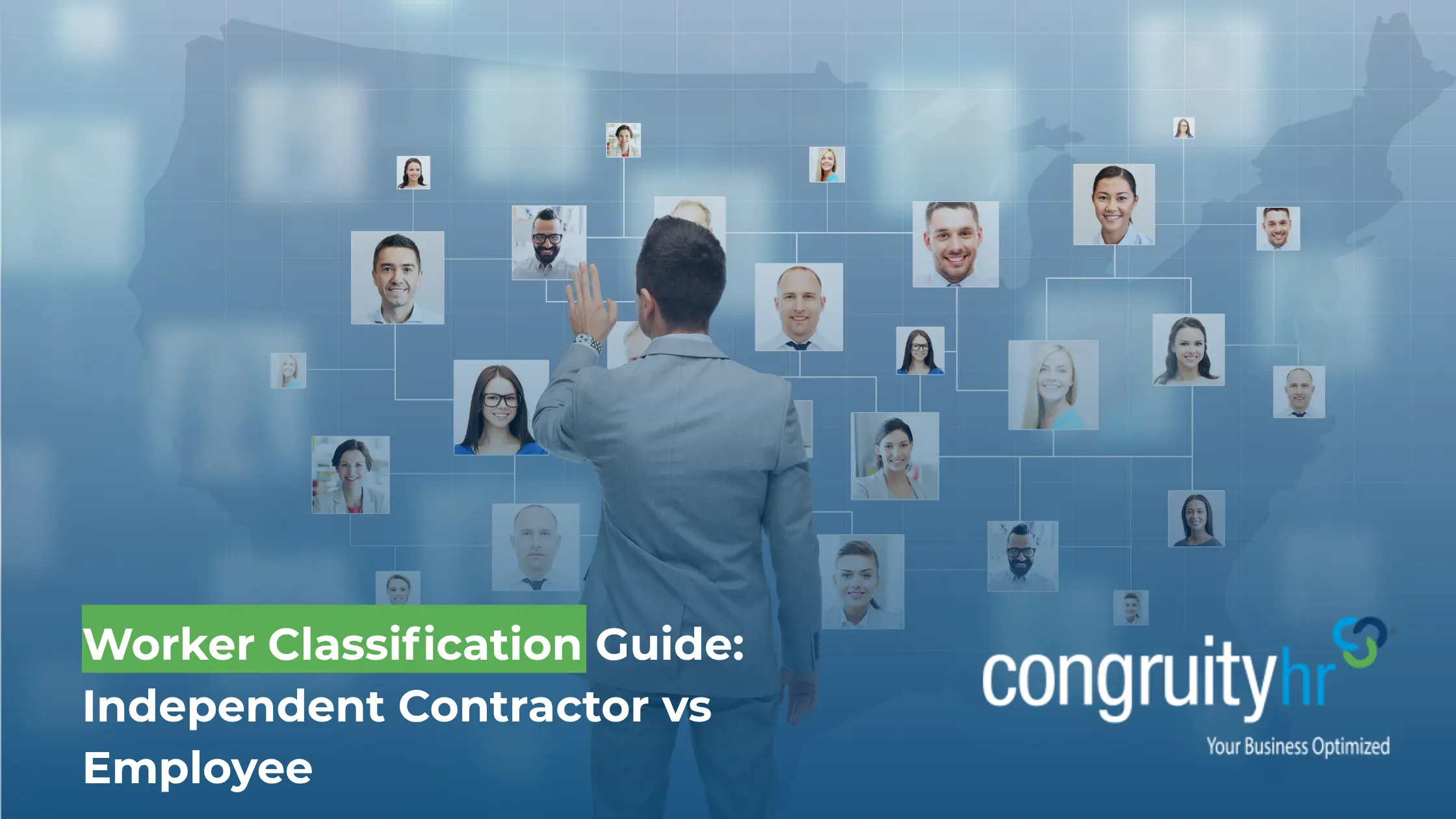Top HR Outsourcing Company Congruity:
When it comes to growing your business, hiring help is essential. But one question trips up many employers: Should this person be classified as an employee or an independent contractor?
Get it wrong, and you could face fines, back taxes, or even a full-blown IRS or DOL audit. Get it right, and you protect your business from compliance headaches while supporting a fair and efficient workplace.
This guide breaks down the difference between independent contractors and employees, walks you through key classification tests, and offers simple steps to stay compliant all in plain English.

Worker classification is how you legally define the people you hire: either as employees or independent contractors. It affects how you pay them, whether you withhold taxes, and what rights and benefits they’re entitled to.
Here’s a basic distinction:
Still sound a little fuzzy? You’re not alone and that’s exactly why worker classification is such a hot topic for HR teams and business owners alike.
You might be tempted to classify someone as a contractor to skip payroll taxes or avoid benefit costs. But if you’re treating that person like an employee in practice, it’s a risky shortcut.
In fact, the IRS once audited over 6,000 firms as part of a worker misclassification initiative. They estimated the government could collect $7 billion over 10 years just by enforcing classification laws.
Let’s break it down:
| Task | Recommended Deadline |
|---|---|
| Vendor/Carrier Meeting | August–September |
| Finalize Offerings | Early October |
| Launch Communications | Mid-October |
| Employee Enrollment | November |
| Final Audit & System Close | Early December |
Keep in mind what’s written in the contract matters, but what you do in reality matters even more.
To figure out the right classification, you’ll want to understand the three major tests commonly used in the U.S.
The IRS looks at three main areas:
Learn more directly from the IRS guidance page.
The DOL’s test focuses on six key factors, such as:
This test presumes a worker is an employee unless all three parts below are true:
Fail just one part of this, and the worker should likely be classified as an employee under state law.
Even if a worker signs an “independent contractor” agreement, their actual working conditions could still point to employee status.
Here are some warning signs:
These scenarios raise a red flag for regulators, even if your intentions were innocent.
So, how do you make sure you’re classifying workers correctly?
Here’s a solid game plan:
“ Tip: Download and customize the IRS’s 20-Factor Test to document your decision-making process.”
1. Can someone be both an employee and a contractor for the same company?
Rarely. The IRS discourages “dual status” roles. If someone’s doing similar tasks in both roles, they’re probably an employee.
2. What happens during a misclassification audit?
You’ll need to provide contracts, payment records, and documentation of how you evaluated worker status. Penalties can stack up fast.
3. Are classification rules the same in every state?
Nope. Some states (like California) use the strict ABC Test. You must comply with both state and federal laws whichever is more protective of the worker.
4. Can I reclassify a contractor as an employee later?
Yes. If a role evolves to include more oversight, you should reclassify before issues arise. It’s better to be proactive than reactive.
Classification gets tricky fast, especially if:
In these situations, a partner like CongruityHR can step in to review your worker arrangements, identify risks, and help you build a compliance-first workforce model.
At CongruityHR, we help businesses:
Schedule your compliance review now and get peace of mind that your team is on solid legal ground.
Classifying your workers correctly isn’t just a tax issue, it’s about building a healthy, compliant business that’s ready to grow.
Don’t wait until the IRS comes knocking. Take the time to review your worker classifications and fix any gray areas before they become costly problems.